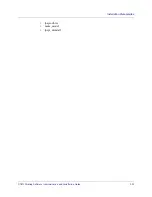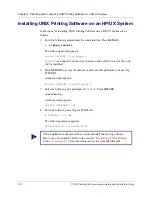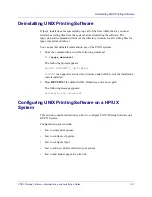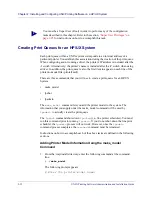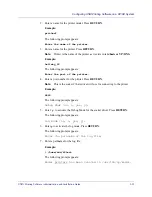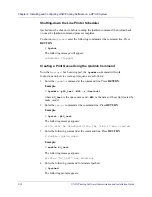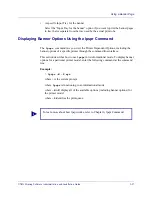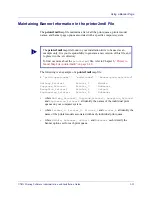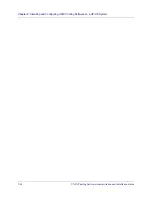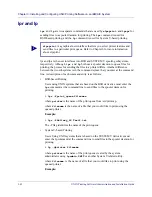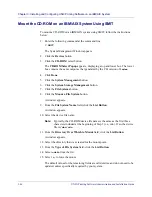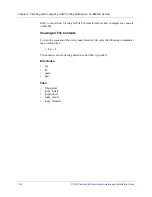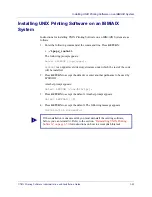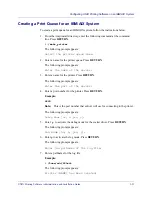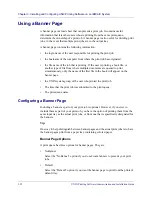
3-42
8/25/02
UNIX Printing Software Administration and Installation Guide
Chapter 3: Installing and Configuring UNIX Printing Software on an IBM/AIX System
lpr and lp
lpr
and
lp
are two separate commands that are used by
xlpsprint
and
lpspr
for
sending files to a spooler daemon for printing. The
lpr
command is used for
BSD-based printing, and the
lp
command is used for System V-based printing.
lpr and lp are the user interfaces into BSD and SYSTEM V spooling subsystems,
respectively. Although
lpr
and
lp
both use a spooler daemon to queue files for
printing, the process for sending the files to a printer differs. Another difference
between the two subsystems is in the command syntax that you enter at the command
line. A description of each command entry is as follows:
•
BSD-based Printing
Users using UNIX systems that are based on the BSD derivative must enter the
lpr
command at the command line to send files to the spooler daemon for
printing.
# lpr -Pprint_queue filename
where
printer
is the name of the print queue from /etc/printcap.
where
filename
is the name of a file that you would like to print using the
queued printer.
Example:
#
lpr -PHallway_40 Test1.txt
The -P flag identifies the name of the print queue.
•
System V-based Printing
Users Using UNIX systems that are based on the SYSTEM V derivative must
enter the lp command at the command line to send files to the spooler daemon for
printing.
# lp -dprinter filename
where
printer
is the name of the print queue created by the system
administrator using
lpadmin
,
SMIT
or another System V related utility.
where
filename
is the name of a file that you would like to print using the
queued printer.
Example:
i
xlpsprint
is a graphical user interface that lets you select printer features and
send files to a particular print queue. Refer to Chapter 6 for more information
about xlpsprint.


